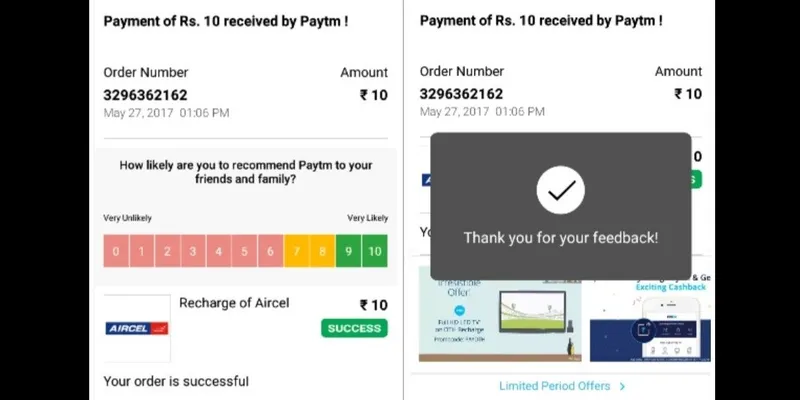

Why your customers are never going to be loyal?
“Customers often choose companies because of their product but leave them because of their bad service.”

Customer service is fast changing and is not anymore about delighting the customer.
“The more you delight your customers, the more loyal they become towards your brand.” This is by far the most clichéd statement heard from any customer service expert on the topic of customer loyalty. In the book, “The Effortless Experience” author Matthew Dixon has challenged the misconceptions behind what truly affects customer loyalty. Research found that exceeding expectations may create “feel-good” moments for the customer, but does not have any significant impact on customer loyalty. Organizations going after delighting the customer have only increased their costs, not loyalty. Its impact is more or less the same as just solving customer’s issue consistently.
What Drives Customer Loyalty?
The strategy of delivering services beyond expectations to delight your customers is a costly one and delight happens only 16% of the time. The customer today is more informed and impatient than ever. To solve any issue, they are opting for self-service and most of them prefer to visit the website to solve the issue there itself rather than switching to channels like the phone or the e-mail support which is costing their time. While on the other hand, interacting with the customer over the call is not suitable for organization’s perspective because it will increase both the cost and the likely hood of increasing customer’s disloyalty because of the additional effort that the customer put in to resolve the issue. The key drivers of causing disloyalty after an interaction include “repeat contact, channel switching and call transfer which cause repeat information” which should be avoided by the organization to reduce the churn.
Research found that 30% of the customers had a high-effort experience to resolve their problem which is a sign of more disloyal customers. What’s even surprising that 56% of the customers re-explain their issue and around 62% have to contact repeatedly to get the issue resolved. Having more channels worsen the situations by confusing the customer on channel selection and even increasing the effort. Also, more number of channels lead to a higher amount of money spent on customer service.
How to Measure Customer Loyalty?
Most companies don’t understand that customers want their issue to be resolved quickly. Off-course all of us like having a delightful experience but sooner or later forget that, thus delighting customers haves zero impact in the decision making process in the future. To start with what causes loyalty among customers, we’ll first discuss in detail what actually are the different methods to calculate the Loyalty.
Customer Satisfaction Score (CSAT)
CSAT is till date considered as the best method to calculate the loyalty of the customer. It simply measures the degree to which a product or a service satisfied the need of a customer. The ideal way to measure Customer Satisfaction Score is the online survey method which gives the unbiased take of the customer on the product or service whether or not it was able to satisfy their needs. But the CSAT is just a representation of the satisfaction levels of the customer relative to their expectations which mean a higher CSAT score not necessarily mean that that the customer is loyal towards the product or service. And what’s more evident is that more engaged audience will be the ones who will participate in those optional surveys which will depict an overestimated CSAT scores.
Net Promoter Score (NPS)
Net Promoter Score is important KPI to measure customer loyalty. Introduced as a replacement to the CSAT because it’s more commercially meaningful, Net Promoter Score simply means “How likely is a customer going to recommend a brand, product or service?” It is asked through surveys on a scale of 1-10. To understand this better, let’s take the example of Paytm, the e-wallet, and recharge service. Almost all of us may have once recharged from the platform (If not, you could have a look at the screenshot attached below). After the recharge process is successfully completed, the survey question appears asking the likely hood of recommendation. This is one of the best examples of the Net Promoter Score survey.The Net Promoter Score survey question on Paytm

Paytm uses NPS to gain insights about Customer Loyalty.
The customers who participate in this kind of survey and rate the likely hood of recommending a product or service are categorized into three types. They are the Promoters, Passives, and Detractors.
The Promoters: These people are the most loyal customers who rate between 9-10 on the scale and may increase their spend on your brand in the future.
The Passives: The customers who are satisfied with your offering but may easily leave you and start using your competitor’s offering. They rate between 7-8 on the scale.
The Detractors: The unsatisfied customers who promote negative word of mouth for your brand and may persuade others to stop using it. They rate low between 0-6 on the scale.
Although, the NPS highly depends upon the recent experience which the customer may not remember in the long run thus may not affect decisions in the future.
Customer Effort Score (CES)
This means that “How much effort you personally have to put to get your problem or issue resolved?” This is also done through surveys, but this time on a scale of 1-5. Customers give punishments because of bad service more easily than they reward over the top service. It’s important for an organization to understand that getting customer’s problem solved improves loyalty, not just delighting them which may create a short-term “feel-good” moment having no substantial impact in long run. Research shows that exceeding customers expectations (by offering freebies, extension in warranty or a free shipping) can only marginally improve customer loyalty but will significantly increase the costs compared to just simply meeting their needs.
Customer loyalty can be easily attained by solving their issues and complaints quickly and making it less painful for them get the issue sorted. To dig deeper, for time being, suppose yourself as a customer who wants to get an issue sorted. Then what are the things in the whole process of customer service that you find painful? It could be not getting enough information on the website, calling repeatedly and repeating the information over the call. Organizations today need to understand the importance of reducing customer effort by the elimination of these effort increasing factors. This could help the organization significantly increase customer loyalty.
First Contact Resolution (FCR)
As a customer, one of the things that we don’t like is contacting the organization again and again for getting our issue resolved. Research show that 22% of the follow-up call issues are related to the problem which you initiated on the first call itself. The new belief is that the customer Service representative should not only resolve the current issue, but they should also try to figure out all the future problems that could encourage you to call again. The focus has shifted from the Average Handle Time (AHT) which is a call center metric for the average duration of a call. In this metric, the rep to avoid ruining his professional AHT will try to keep the conversation short no matter how complex that issue is. Customers want the issue to be ideally settled in the first contact itself thereby eliminating the need for a follow-up call.
Now, to identify whether the second call from the same customer was a follow-up or a new call, a contact window period is defined which is different in different organizations. It is the period of time for which the second call from a customer will be regarded as a follow-up call. Suppose for an organization where the contact window is 24 hours. In that case, any call from your side post 24 hours of the first call will be considered as a whole new issue.
To practically implement this, most the companies send a post call survey on your email to check whether you are fully satisfied and the issue that has been recently resolved. Most customers are switching to call only when enough information is not available on the website. Customer service is fast changing and is not anymore about delighting the customer.
Channel Switching
How many of you have bought a product from an e-commerce site, didn’t like and decided to return. I remember one such encounter with one of these sites which happened a couple of years ago when I ordered a branded budget mobile phone. After days waiting for the delivery, what I received was a non-branded budget phone. I tried to find the information like the terms and conditions of the refund, although I was not able to find a single piece of information. I called them many times and finally got to know that the refund will be initiated after few days of the pickup. I read tweets of some of the existing customers of the site and it was very surprising that most of them didn’t get the refund even after 2-3 months of the pickup. This was a perfect case of negative word of mouth when the customers have to switch from the web to call and put much more effort to get back their refund which could have been done within clicks.
This whole incident tells that most customers like me don’t like to call in the first go if I have the option to find a solution to my problem in the support or FAQ section of the website. Repeat calls are the second thing in this whole customer experience which I felt was increasing my effort to get the issue resolved. Finally, I didn’t return the product fearing that they won’t even give me the refund like they did for other customers. They got negative word of mouth from my side in return and a customer who would discourage others from buying from that site.
Self Service
Reducing the customer effort causes customer loyalty and self-service is one of the best ways to attain that. When an organization is trying to offer an experience wherein the customer does not need to call or send an e-mail regarding a query as the important information is already provided in the support section of the website. Like we discussed how I tried to find information about the refund on the site and was not able to get that. If one does not get the information that he wanted, he would either switch to call or to email.
It’s surprising that around 57% of all the call volume comes from the customers who went to the website but couldn’t find an answer to the question. One of the biggest advantages of self-service according to me is that you can get the answer to your queries at any point of the day, unlike call support which may be restricted for certain hours. Although organizations need to understand that just having some support articles on their site is not self-service. They need to properly monitor the reasons behind the calls with questions related to those topics which are already there on the site and in the process, identify the topics which are not posted in the support section. In today’s era, when customer experience matters a lot, organizations need to work with different channels to create a seamless experience for the customer with the correct balance of self-service and human touch regardless of what channel they choose.
Experience Engineering
The traditional skills that most of the organizations used to teach their customer service representative was to smile, be calm and listen patiently but depending on these methods don’t quite seem to be a good idea since they are long gone. But the more reps deal with complex and difficult situation, the more becomes the need to have certain other skills as smiling won’t help in that case. The concept of Experience Engineering revolves around the customer’s psychology and to engineer or to manage the conversation with a more carefully selected language to improve what they interpret although the outcome remains the same.
This is one of the most important skills required in a customer service representative today. The first thing a rep should adopt is the use of positive language because human brains don’t like to listen to a NO (at least I don’t like it). By using No, the rep is making the customer more angry and difficult to deal (I’m not encouraging one to lie to the customers). Also, anchoring expectations of a customer is a good way to engineer customer’s experience. This is the art to project the only available option more reasonable by comparing it with an option which is not suitable for the customer. Although the option might not be perfect as per customer’s expectations, it will be definitely better than all the other options available. The new generation of customer service representative needs to stop relying on politeness in situations and rather switching to Experience Engineering.
The most impactful skill – Control Quotient
There are many skills that impact the performance of a customer service representative like the Intelligence Quotient, Basic Skills and Behaviors, Emotional quotient and the Control Quotient. Among these skills, Control Quotient has the maximum impact on a rep’s performance.
I remember my conversation with one of the customer care representative when some amount around ₹800 was displaced from my e-wallet. I almost lost my control when the issue was not sorted for almost 6 months. The unique thing about this incident was that the organization was not able to identify the problem with my account. The representative that day was able to maintain his cool although I was very angry. He finally figured out and informed that the problem was with my email which was registered with two different phone numbers. The way the rep controlled the conversation and successfully sorted the issue was one the few occasions when the issue got sorted quickly.
This very ability to stay cool during challenging situations and to take over the control of the interactions with the customer is called Control Quotient. Just like any other representative, he could have politely asked for some time or transferred the call, but rather he took this as a challenge and finally sorted my issue (and retained a customer too)! These reps overcome the outcome of any interaction quickly and start fresh with a new conversation. They respond well to criticism and bounce back from a negative experience.
Empowering the Agents

Customer Service Reps should be given the freedom to deal with situations and complaints in the way they feel would satisfy the customer.
The success of the customer service department highly depends upon the power a rep is given to exercise to take decisions from the best of their knowledge. Trusting them and providing them with appropriate levels of authority to make decisions gives them a sense of ownership and responsibility on their work and they potentially perform much better. Plus when given the liberty, these reps are able to come up with much better and creative ideas to solve the issue rather than following the script provided by the organization. Creative ideas can only come when the agents don’t have the fear of getting fired.
Also, when the employees are happy, then they are able to deliver more. A right mix of empowerment and a transparent communication between the reps and the managers leads to better results. It’s also very important for the company to convey its representatives what they are doing and what the company is trying to achieve. This will give a large picture of how their everyday work is impacting the organization in the long run. Eliminating the checklist mentality should be a priority to organizations because it will encourage more flexible interactions with customers leading to an increased customer loyalty.



